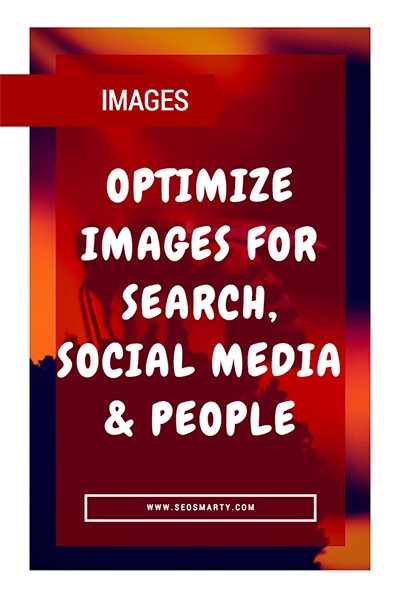
The article was updated April 2023. Please post comments to add up-to-date tips and tools
Optimize your images for search engines:
- Use keywords in alt text, text around the image, file name, page title;
- Set up separate search-engine-accessible image folder;
- Use reasonable image file size (here are wordpress plugins to optimize images).
- Limit number of images per page;
- Use popular and reliable photo sharing hosting (e.g. Flickr is reported to help in Yahoo! image optimization).
Table of Contents
- (Obvious) use really great images to give your readers another reason to spread the word;
- Use social media image resizer to create images of perfect dimensions for each social media network
- Create animated GIFs: They go hot easily!
- People pay more attention to a clear image where they can see details (choose high quality images).
- (Clean, clear) faces in an image get more eye fixation. (don’t use abstract images too often).
- Keep them relevant: images are not the first thing a visitor sees on a web page but they can compel him to stay (according to the eye-tracking research web text is prior to images; when looking at a printed article people see images first; with web page they see text first – nevertheless images make the visitor stay and remember the page via relevant associations).
Gender specific:
- Women are better at recognizing facial emotions than men (research):
- Men seem to be more likely than women to first look at faces rather than other parts of a nude body (source);
- Women are more interested in images with more than one person.
Tools and fun for image optimization:
- SEO Friendly Images WP Plugin – automatically optimize image ALT and TITLE with the help of post “title” variable;
- Again, this article lists more tools
How to find images online
- Smart Photo Stock is a great resource
- A Guide to Finding and Using Incredible Flickr Images – describing (1) which Flickr images you are allowed to use; (2) tactics to quickly find best images.
- You can also use Instasize to edit those photos for free
Image stats:
Let’s make a stronger case here:
- According to WME Group, content with photos generate 53 percent more engagement than text-only based content and draws over 100 percent more comments
- According to Backlinko, content with at least one image significantly outperformed content without any images. Although it’s probably correlation, not the causation phenomenon
Any tips and tools to add to this clutter-free checklist? Please add them in the comments!
The following two tabs change content below.


I am Ann Smarty, owner of SEOsmarty.com and co-founder of Smarty.Marketing. I've been in the SEO industry for two decades and I am now reporting on search and AI news over at annsmarty.com
